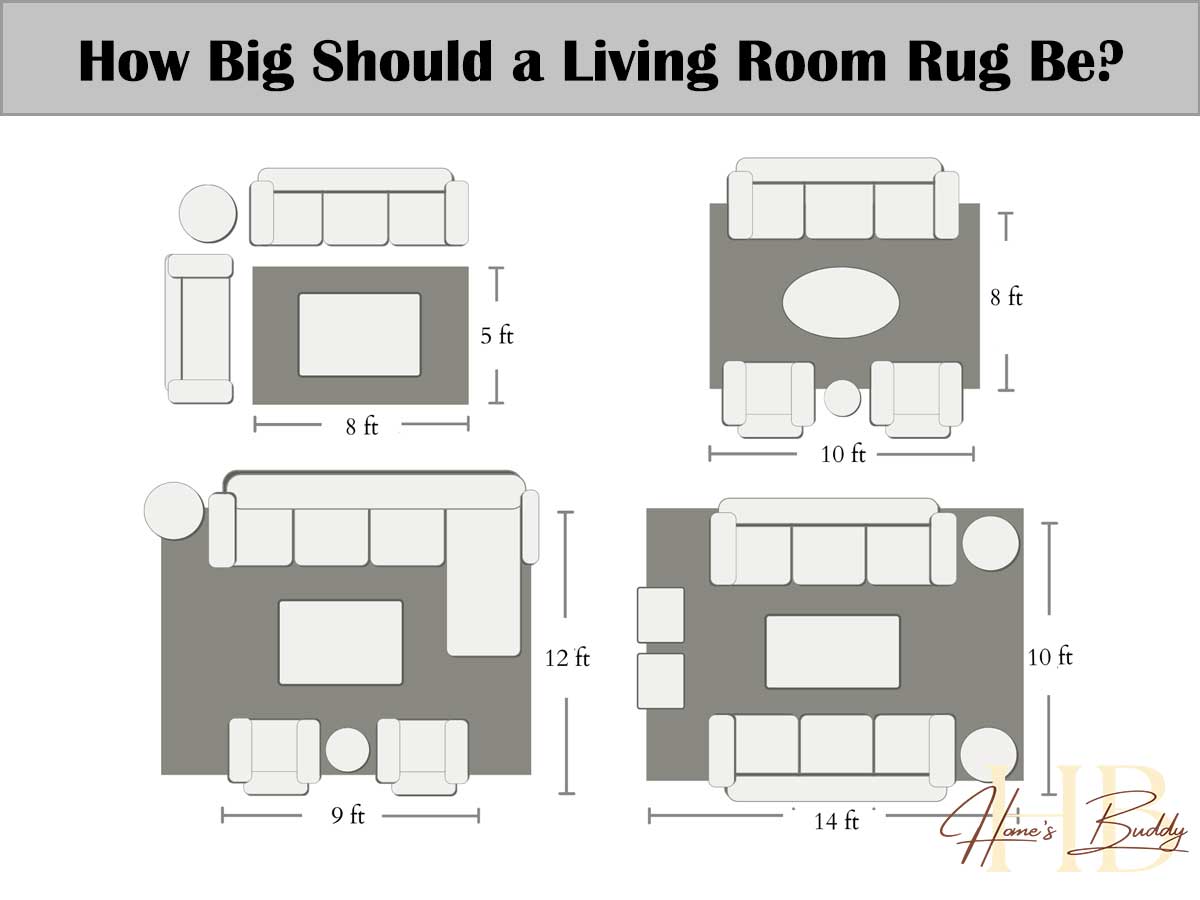Blogs
How Big Should a Living Room Rug Be?
A living room rug does more than cover your floor—it defines the space, ties furniture together, and adds comfort underfoot. But the wrong size can throw off the entire look of the room. If it’s too small, the space can feel awkward or disconnected. Too large, and it might overwhelm the room. This article breaks down how to choose the perfect rug size for your living room in detail.
1. Measure Your Living Room First
Before you begin browsing rugs, start by measuring your living room. This helps you avoid the common mistake of choosing a rug that’s too small for your space.
- Measure the entire room, noting both length and width.
- Then measure the main seating area, which includes your sofa, chairs, coffee table, and side tables.
- If your living room is open-plan or shares space with a dining or kitchen area, measure the section you want the rug to define, not the entire floor.
You’ll typically want a rug that sits at least 6 to 12 inches away from walls to give the room some breathing space. Avoid wall-to-wall rugs unless it’s meant to be a carpet replacement.
2. Common Rug Sizes for Living Rooms
Understanding standard rug sizes helps narrow your choices and visualize how they’ll fit into your room. Here’s a breakdown of the most common options:
- 5′ x 8′ (152 x 243 cm): Works well in compact living rooms or under smaller furniture setups. In this case, you can place the front legs of the sofa and chairs on the rug, but the back legs will rest on the floor.
- 6′ x 9′ (183 x 274 cm): A slightly larger option that suits mid-sized living rooms. It helps connect a standard sofa with an accent chair and coffee table setup.
- 8′ x 10′ (244 x 305 cm): One of the most popular choices. This rug can often accommodate the front legs of all your living room furniture, anchoring the space without making it feel crowded.
- 9′ x 12′ (274 x 366 cm): A great fit for large living rooms. All major furniture pieces—sofa, chairs, coffee table, even side tables—can sit fully on this rug, creating a balanced and luxurious layout.
- 10′ x 14’+ (305 x 427 cm or more): Ideal for oversized or open-concept spaces. This size allows you to create a visual “room within a room,” especially helpful when there are no walls to separate different functional zones.
3. Layout Tips Based on Furniture Arrangement
Your rug should do more than fill space—it should work with your furniture to define the living area. There are a few common layout strategies:
- All legs on the rug: This creates a clean, unified look. All furniture—sofa, chairs, tables—rests completely on the rug. This setup works best in large living rooms and gives a luxurious, professional design feel.
- Front legs on, back legs off: A popular option for medium-sized rooms. Here, the front legs of the sofa and chairs sit on the rug, while the back legs rest on the floor. This layout visually connects furniture while using a slightly smaller rug.
- Coffee table only: In very small rooms, a small rug can sit under just the coffee table. However, this layout can feel disjointed if the rug is too small. Make sure the rug is still large enough to touch at least the edges of surrounding furniture.
- Floating rug: Sometimes used in large, open spaces where the rug doesn’t touch furniture but defines a central area. This layout requires a very large rug to avoid looking like an afterthought.
4. Pro Tips to Keep in Mind When Choosing a Living Room Rug
- Use painter’s tape: Lay down tape in the size of the rug you’re considering to see how it fits in your living room before buying. This helps visualize the final look.
- Go big when in doubt: A slightly larger rug can make the space feel expansive and grounded. Too small a rug will make furniture look like it’s floating.
- Match rug orientation to room shape: If your room is rectangular, choose a rug that’s also rectangular and aligns with the room’s length. The same goes for square rooms and rugs.
- Allow the floor to show around the edges: Don’t run the rug right up to the walls. Leaving 12 to 18 inches of exposed flooring around the rug gives the room a more open and balanced appearance.
- Consider door clearance and foot traffic: Make sure doors can open over the rug if it’s placed near an entryway. And ensure the rug doesn’t cause a tripping hazard in walkways.
How Much Is a Living Room Rug?
Living room rugs come in a wide range of prices depending on their size, material, craftsmanship, and brand. On average, here’s what you can expect:
- Low-end rugs: $50–$150. These are typically machine-made using synthetic materials like polyester or nylon. They’re affordable and functional but may lack durability and design detail.
- Mid-range rugs: $150–$600. These rugs often offer a balance of style and quality. You’ll find a mix of wool, cotton, or synthetic blends in various patterns and weaves.
- High-end rugs: $600–$2,000. Handmade or artisan rugs, especially those made with natural fibers like wool or silk, fall into this category. These pieces are often more durable, luxurious, and designed to be long-lasting investments.
- Designer or antique rugs: $2,000 and up. Authentic Persian, Oriental, or custom-designed rugs can be priced in the thousands, or even tens of thousands. These are considered works of art as much as functional decor.
Wondering why some rugs cost as much as a new sofa? From hand-knotting techniques to imported materials, the price of a rug often reflects far more than meets the eye. Learn more in our deep dive: Why Are Rugs So Expensive?.

